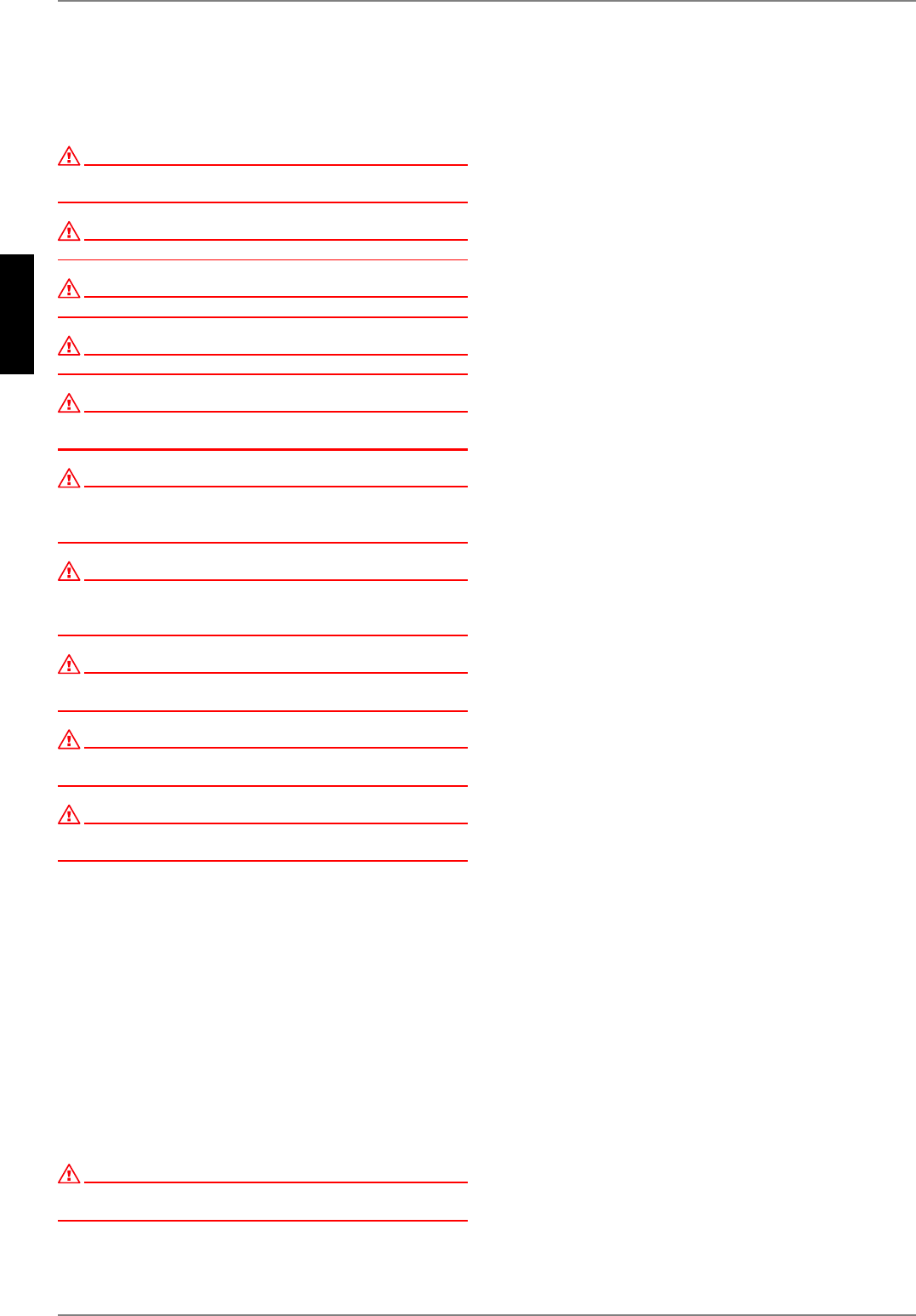
E-2
English
1
1 Read immediately
1.1 Important Information
ATTENTION!
Any work on the heat pump may only be performed by an authorised and
qualified customer service.
ATTENTION!
The heat pump must not be tilted more than max. 45° (in either direction).
ATTENTION!
The transport securing devices must be removed prior to commissioning.
ATTENTION!
The heating system must be flushed prior to connecting the heat pump.
ATTENTION!
The supplied strainer must be fitted in the heat source inlet of the heat
pump in order to protect the evaporator against the ingress of impurities.
ATTENTION!
The brine solution must contain at least 25 % of an antifreeze agent on a
mono-ethylene glycol or propylene glycol basis and must be mixed prior
to filling.
ATTENTION!
The clockwise phase sequence must be observed when connecting the
load lines (the heat pump will deliver no output and will be very noisy
when the phase sequence is incorrect).
ATTENTION!
Commissioning is to be effected in accordance with the installation and
operating manual of the heat pump controller.
ATTENTION!
To prevent the accumulation of deposits (e.g. rust) we recommend using
a suitable corrosion protection system.
ATTENTION!
Disconnect all electrical circuits from the power supply before opening
the enclosure.
1.2 Legal Provisions and
Guidelines
This heat pump conforms to all relevant DIN/VDE regulations
and EU directives. For details refer to the EC Declaration of Con-
formity in the appendix.
The electrical connection of the heat pump must be performed
according to and conforming with all relevant VDE, EN and IEC
standards. Beyond that, the connection requirements of the local
utility companies have to be observed.
The heat pump is to be connected to the heat source and heat
distribution systems in accord-ance with all applicable provi-
sions.
ATTENTION!
Any work on the heat pump may only be performed by an authorised and
qualified customer service.
1.3 Energy-Efficient Use of the
Heat Pump
By operating this heat pump you contribute to the protection of
our environment. A prerequisite for an efficient operation is the
proper design and sizing of the heating system and the heat
source system. In particular, it is important to keep water flow
temperatures as low as possible. All energy consumers con-
nected should therefore be suitable for low flow temperatures. A
1 K higher heating water temperature corresponds to an increase
in power consumption of approx. 2.5 %. Low-temperature heat-
ing systems with flow temperatures between 30 °C and 50 °C are
optimally suited for energy-efficient operation.
2 Purpose of the heat
pump
2.1 Application
The brine-to-water heat pump is designed for use in existing or
newly built heating systems. Brine is used as the heat carrier in
the heat source system. Ground coils, ground collectors or simi-
lar systems can be used as the heat source.
2.2 Principle of Operation
The heat generated by the sun, wind and rain is stored in the
ground. This heat stored in the ground is collected at low temper-
ature by the brine circulating in the ground collector, ground coil
or similar device.
A circulating pump then conveys the warmed brine to the evapo-
rator of the heat pump. There, the heat is given off to the refrig-
erant in the refrigeration cycle. When so doing, the brine cools so
that it can again take up heat energy in the brine circuit.
The refrigerant is drawn in by the electrically driven compressor,
is compressed and "pumped" to a higher temperature level. The
electrical power needed to run the compressor is not lost in this
process, but most of the generated heat is transferred to the re-
frigerant.
Subsequently, the refrigerant is passed through the condenser
where it transfers its heat energy to the heating water. Based on
the thermostat setting, the heating water is thus heated to up to
60 °C.


















